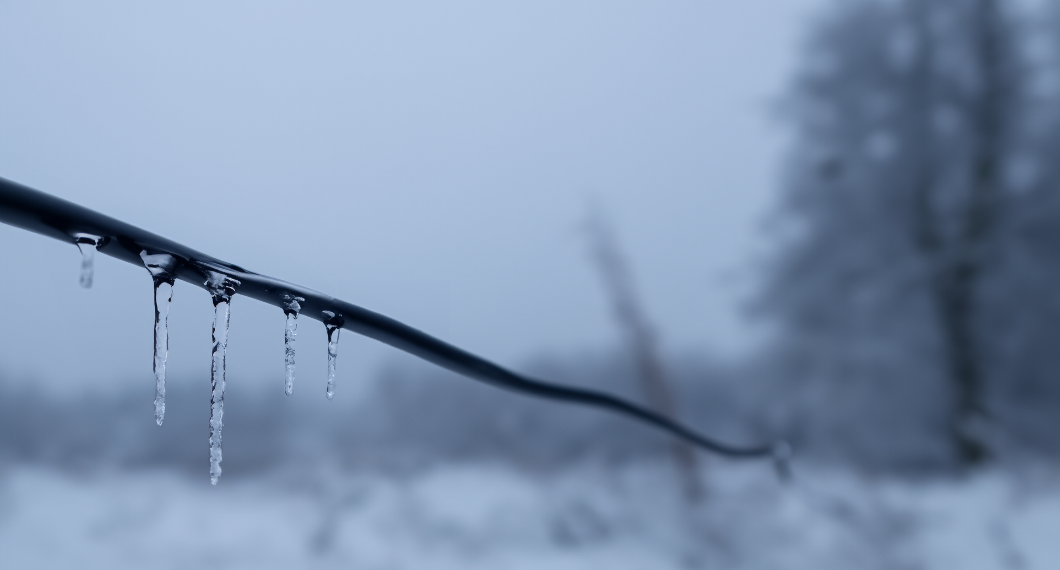
Beyond Freezing: GameChanger Cable's Blueprint for Cold-Resistant Networking
With digitalization in the IoT/IIoT era comes the need to connect and power more IP-based devices in more locations than ever—whether it’s a Wireless Access Point out in the warehouse or surveillance camera at the loading dock. The maximum 100-meter distance for twisted-pair Ethernet cabling from a telecom room to a device as specified by industry cabling standards like TIA-568.2-D can hinder the ability to cost-effectively reach every device. Thankfully, those standards are voluntary minimum guidelines based on worst-case transmission performance with no headroom. That’s why our GameChanger Cable – the first, the original, and the only patented long-distance category cable on the market – can support up to 2.5 Gigabits per second (Gb/s) Ethernet data transmission and up to 100 Watts of PoE power to 200 meters. We designed it with enough headroom to do so!
While connecting more devices in more locations often means exceeding 100 meters, it also inherently means more devices in more environments—some of which may be subject to extreme cold, whether that’s year-round in applications like cold-storage facilities or outdoors especially in northern regions as the days grow shorter and the temperatures drop. It’s vital that your Ethernet cabling can also hold up in extremely cold environments.
Sometimes You Need Extra Thermal Protection
When deploying IP-based voice, data, video, and Wi-Fi connections in more environments, there is a greater likelihood of encountering extreme cold that can adversely impact cabling and connectivity. Mountainous and northern regions of the country like Alaska, Montana, the Dakotas, Minnesota, and upper areas of New England where temps can dip down well into the negatives still need connections to support Wi-Fi, video surveillance, access control, and digital signage in outdoor spaces like campus courtyards, parking lots, restaurant drive-throughs, and more. There are also indoor cold storage environments subject to extreme cold that require connectivity—for everything from produce and meat products in the food processing industry to medicines and vaccines in healthcare and pharmaceuticals. Cold storage even plays a critical role for certain chemicals used in manufacturing and aerospace and for preserving quality in the booming cannabis industry.
While typical riser and plenum-rated Ethernet cables with polyvinyl chloride (PVC) jacket materials are ideal for most commercial-grade LAN environments, expanding connections into extremely cold environments sometimes means you need extra protection. Extreme cold can degrade commercial-grade PVC jacketing material, causing cables to become brittle and inflexible. When this happens, the cable is difficult to install and the outer jacket is at risk of breaking open, leading to underperforming or failed links. It’s therefore crucial to choose a cable based on the lowest possible temperature of the environment where it will be deployed. For example, a typical plenum-rated Ethernet cable with PVC jacketing has an operating temperature rating of -20°C to 75°C (-4°F to 167°C). However, cold storage for most vaccines is required to maintain temperatures that range between -50°C and -15°C (-58°F to 5°F).
When reviewing technical specifications for cabling you may see some cables that have different temperature limits for Operating vs Installing; it’s important to understand the differences. Operating temperatures can reach colder levels than installing temperatures because once the cables are installed, they are not expected to be pulled, bent or moved in a way that could cause a cold, brittle jacket to crack. The installation process can be hard on cables in cold environments but there are somethings you can do to mitigate those risks. Avoid storing cable in a cold location (like in your truck) overnight before an install. If possible, store your cabling in a temperature-controlled environment (at least 65°F / X°C) until right before the cable needs to be installed.
The Best of Both Worlds
One of the biggest challenges with accommodating network connections in extreme cold environments is the cost of transitioning from typical riser- and plenum-rated PVC cables used in indoor commercial-grade environments to cables more suited to withstand the cold. For example, cables deployed in outdoor locations must be rated for outside use (i.e., OSP) and the temperature of the environment, placed in conduit, and transitioned to indoor-rated cables once indoors per the National Electric Code (NEC). The NEC only allows OSP cables to enter a maximum of 50 feet before it must be terminated to transition to indoor cable. This transition makes perfect sense in situations where large numbers of incoming OSP cables are being used to distribute service throughout a building, such as in a data center or main equipment room.
However, with the proliferation of more devices in more environments, there is often the need to run individual Ethernet cables from a telecom room to an extreme cold environment. Think of single run to a surveillance camera or emergency phone in a college campus courtyard or to a connected temperature sensor or Wi-Fi access point in a cold storage warehouse. Deploying transition points for these one-offs adds additional cost, labor, and time. But there is a better way. Cables designed to withstand extreme cold and rated as indoor/outdoor – where the cable runs indoors (without conduit) and extends outdoors (in conduit) – eliminate the need for transition points.
Our GameChanger cable, which already offers extended distances to support more devices in more locations, is now available with a cable jacket suited for extreme cold and rated as indoor/outdoor plenum. We’ve engineered this new construction of GameChanger cable (part number 258950806) with FEP (Fluorinated Ethylene Propylene) insulators and an FEP jacket. FEP provides exceptional resistance to extreme temperatures with a broader temperature range of -70°C to +200°C (-94°F to +392°F), as well as resistance to moisture and chemicals.
In addition to its exceptional cold-resistant features, GameChanger Cable offers a strategic advantage for low-voltage installers working in extreme environments. The extended distances covered by GameChanger mean fewer electronic devices need to be installed directly in the challenging cold conditions. This not only streamlines the installation process but also minimizes the need for expensive, ruggedized equipment that is typically required in such harsh environments. By reducing the number of devices exposed to extreme cold, low-voltage installers can mitigate the risk of equipment failures, ensuring a more cost-effective and reliable network deployment. GameChanger not only conquers the cold but also simplifies the installer's task, offering a comprehensive solution that aligns with both efficiency and budgetary considerations.
By combining extended distance capabilities with the ability to withstand extreme cold, FEP indoor/outdoor GameChanger cable provides the best of both worlds—letting you connect more devices in more locations AND in colder environments. If your installation requires water-blocking gel, shielding, or a 600V rating, we’ve got additional GameChanger options as well. Check out all GameChanger Cable constructions and download spec sheets by visiting www.paigedatacom.com/gamechanger.
With a service-focused approach, Paige has become the go-to provider for application-driven products for more than 60 years. With an operating presence in more than 100 countries and seven North American locations, we have the reach to handle the most complex jobs and the expertise to customize any order to our customers’ exact needs. As we continue to bring new constructions to the market, our customers know they can trust GameChanger by Paige.
If you have any questions about the cable requirements for any of your deployments, we’re here to help. Chat with us online at www.paigeconnected.com.

